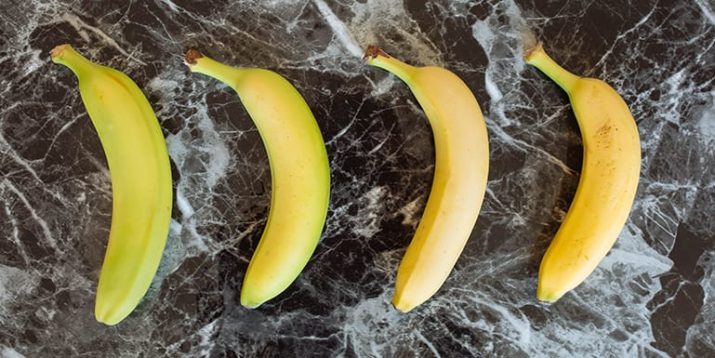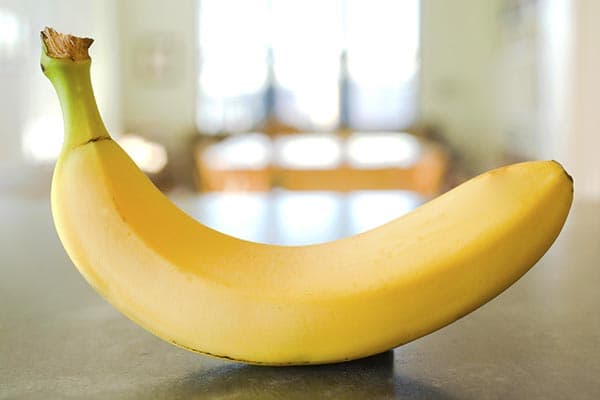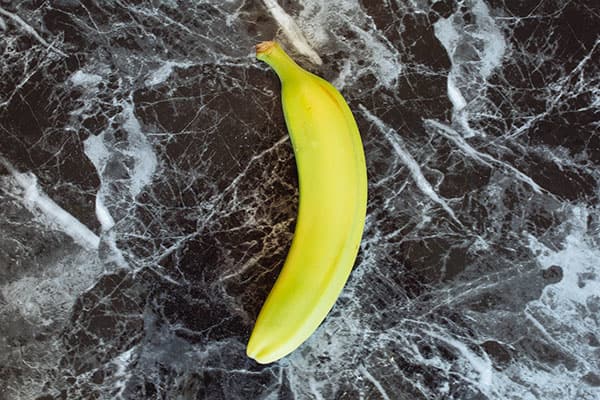How to Use the Good, the Bad and Ugly Bananas

Whether green, yellow, or brown, bananas are uniquely edible at all stages of their life cycle.
Sure, you may not want to eat an unripe green one straight up, and that smushy brown one may not Instagram well atop your smoothie bowl, but the #1 favorite fruit in America is as versatile as it is popular.
If you’ve been crossing your fingers and waiting on green bananas to ripen or tossing the brown ones in the compost, that’s B-A-N-A-N-A-S!
We’re about to show you what to do with bananas, no matter how ripe (or not) they are.

How to Store Bananas
Bananas are picked when they’re unripe and thus more stable to ship. As they ripen, they emit a gas called ethylene, a natural plant hormone.
You can speed up the ripening process by putting your green bananas in a paper bag for a day. Or you can slow it down by separating your bunch and putting each banana in an area with good air circulation.
When your entire bunch ripens at once, refrigerate it for a few days to keep the bananas at their peak. Their skin will darken, but they’ll taste the same.
Does Color Matter?
As bananas ripen, their firm starchiness changes into a sweet softness. While the overall caloric value and macronutrient profile remain the same, there are some differences in their nutritional nuances. (Find out more about the nutrition of bananas.)
“Ripe bananas have a high sugar content but may be easier to digest and contain more antioxidants,” says Colleen Poling, R.D., owner of Nutrition Translator.
Green bananas have their own benefits, says Rachael Hartley, R.D., L.D., C.D.E., C.L.T., owner of Avocado A Day Nutrition.
They’re higher in resistant starch, which is indigestible and functions as a type of fiber. (Resistant starch supports digestive health and glycemic control by serving as a prebiotic and can promote healthy bowel function.)
“Green bananas have less of an effect on blood sugar, but overall, both yellow and green bananas are rich in fiber and other nutrients that are helpful for glycemic control and overall health,” says Hartley.
Bananas: the Green, the Yellow, and the Brown
Here’s how to best use bananas at each stage of ripeness:

Green Bananas
Green bananas won’t taste like the creamy, sweet fruit you know as a banana nor will their signature aroma have developed.
They can be used in place of plantains (a starchy relative of the banana) and as an ingredient in international dishes.
Not a butter fan? Lindsay Nixon of the plant-based blog Happy Herbivore purees green bananas and to replace the butter in pie crusts.
How to Use Them:
- Steamed or boiled green bananas are a traditional Jamaican side dish. Serve them as a swap for rice with curry or a jerk dish. (Try them with Chickpea Curry with Chicken.)
- Slice and pan-fry with coconut oil for a spin on fried plantains.
- Dice a green banana and toss into an Asian-inspired salad or a one-bowl dinner, like this Shrimp Noodle Bowl.

Yellow Bananas
These are the bananas that you know and love. With or without little brown spots, they’re great as a snack or as a topping for cereal, açai bowls, oatmeal, and more.
Preserve perfectly ripe bananas by slicing and freezing them for smoothies. Craving ice cream? Freeze a bunch of bananas and blend them up for vegan “nice cream.”
How to Use Them:
- Choose bananas they are just barely ripe for this sweet, simple Cinnamon Bananas dish.
- Whether you make this Banana Berry Smoothie Bowl or your own creation, ripe bananas add a creaminess that can’t be beaten.
- That firm, yet tender texture makes for a smooth, decadent Banana Mousse, too.

Brown Bananas
Brown, squishy, overripe bananas are ideal for baking. They add a rich sweetness and an almost caramel-like flavor to everything from classic banana bread and muffins to pancakes and cookies.
Ripe bananas are a common swap for eggs in vegan baking, so use one banana for each egg called for in a recipe. (Note: There will be a strong banana flavor.)
They can also be added to smoothies for sweetness, but at this stage, they don’t add much creaminess. Freeze them for banana bread whenever the mood strikes.
How to Use Them:
- Ah, classic banana bread — how all brown bananas love thee. Try this gluten-free version to shake things up.
- Forget the box-mix pancakes and make a stack of Multi-Grain Banana Pancakes.
- If you think you don’t have time in the morning for breakfast, you’re wrong: Make these Oatmeal Muffins With Berries and Bananas ahead of time and all you have to do is grab and go.
So the next time you’re confounded by a bunch of bananas sitting on your counter, stay calm and step away from the trash can — now you have an arsenal of ways to use them at every stage.

